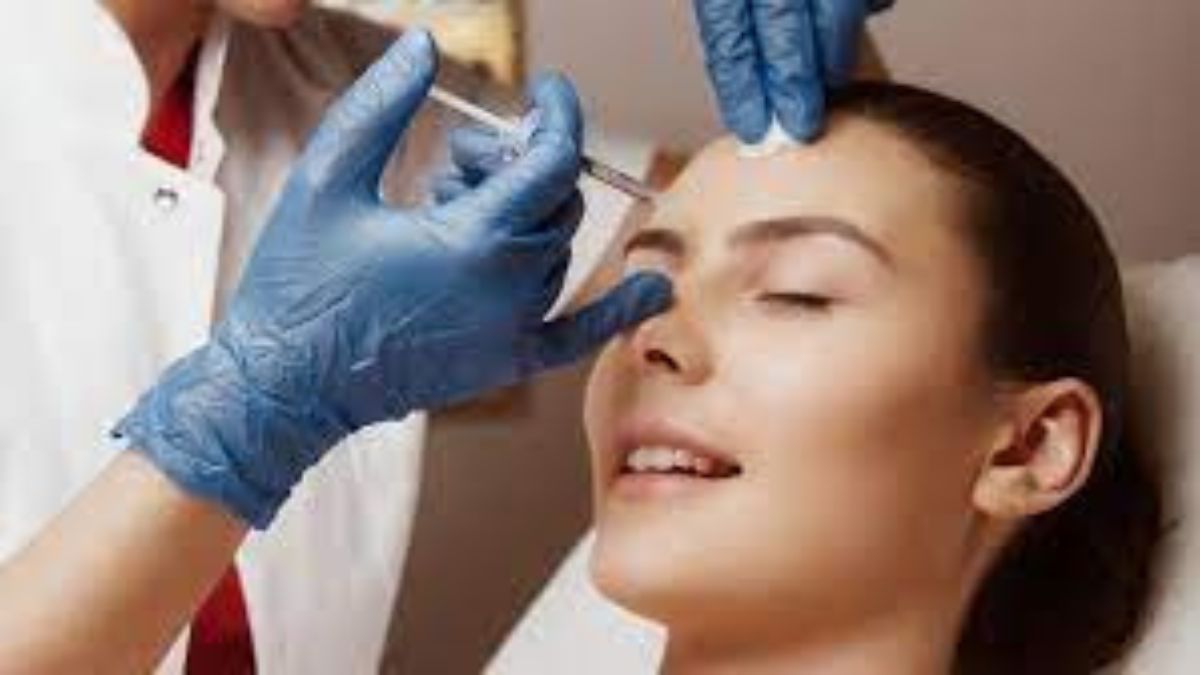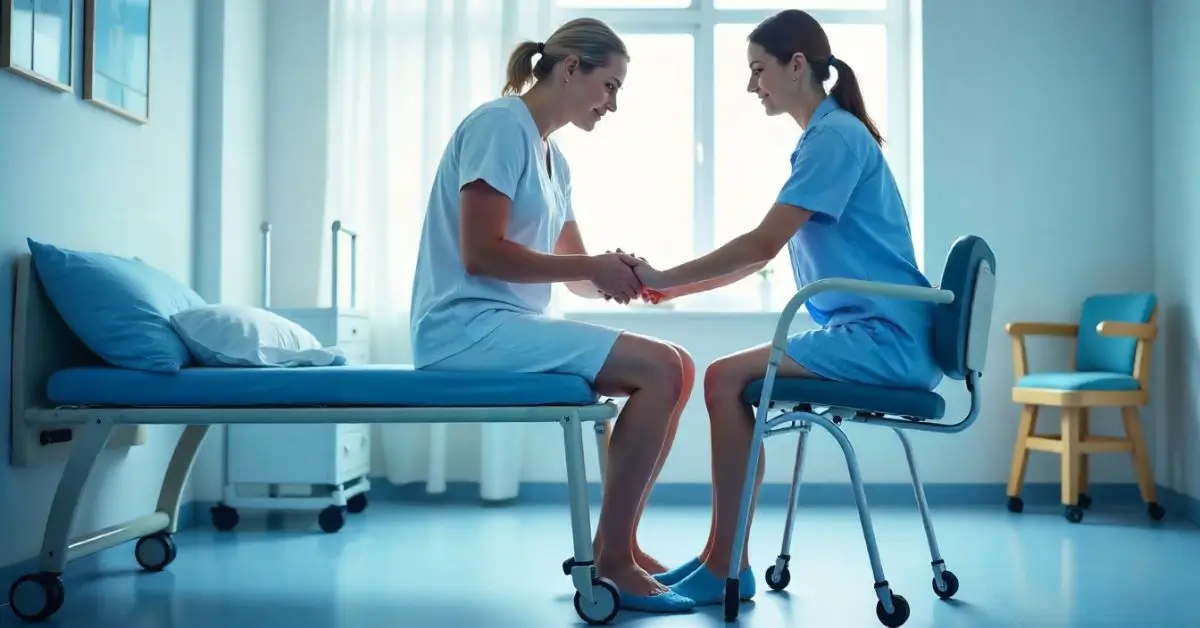HEALTH
A Complete Guide to Excoriation Disorder Treatment Options

Excoriation disorder, also known as skin-picking disorder, is a chronic mental health condition where individuals experience a compulsive urge to pick at their skin, often causing significant damage. This disorder can be challenging to live with and can affect a person’s mental health, social life, and self-esteem.
Fortunately, there are effective excoriation disorder treatment options available that can help individuals manage symptoms and reduce skin-picking behavior.
This guide explores the symptoms of excoriation disorder, treatment options, and strategies for managing the disorder effectively.
What is Excoriation Disorder?
Excoriation disorder, or dermatillomania, is classified under obsessive-compulsive and related disorders in the DSM-5 (Diagnostic and Statistical Manual of Mental Disorders). People with this disorder frequently pick at their skin to the point of causing lesions, bleeding, and sometimes even infections.
Skin-picking episodes may be triggered by stress, anxiety, boredom, or simply a need for relief. Despite the negative consequences, individuals with excoriation disorder find it difficult to stop this behavior.
Common Excoriation Disorder Symptoms
Recognizing the symptoms of excoriation disorder is essential for early diagnosis and treatment. Some common excoriation disorder symptoms include:
- Frequent Skin-Picking Episodes
The individual often feels an uncontrollable urge to pick at areas of their skin, including the face, arms, legs, and scalp. These episodes are frequent and can last for extended periods. - Visible Skin Damage
Due to persistent picking, individuals may develop wounds, scabs, or scars on their skin. Some people also experience infections from open wounds caused by picking. - Repeated Attempts to Stop Picking
People with excoriation disorder are aware of the negative impact of their behavior and may have tried to stop multiple times without success. This lack of control can lead to feelings of guilt or shame. - Emotional Distress
The disorder often causes significant emotional distress, impacting daily functioning and self-esteem. Individuals may avoid social situations to hide the damage caused by skin-picking.
Understanding these symptoms can help individuals seek appropriate excoriation disorder treatment sooner, improving the chances of managing the condition effectively.
How to Treat Excoriation Disorder: Effective Approaches
Treating excoriation disorder involves a combination of therapy, medication, and self-help strategies. The treatment approach can be tailored based on the individual’s specific symptoms, severity of the disorder, and personal preferences. Here’s a look at the main ways to treat excoriation disorder.
1. Cognitive Behavioral Therapy (CBT)
Cognitive Behavioral Therapy (CBT) is one of the most effective excoriation disorder treatments. CBT focuses on identifying and modifying the negative thought patterns and behaviors that contribute to skin-picking.
- How CBT Works
CBT for excoriation disorder often involves techniques like habit reversal training and cognitive restructuring. Habit reversal training helps individuals recognize the urge to pick and substitute it with a healthier response, such as squeezing a stress ball. Cognitive restructuring focuses on addressing underlying thoughts that trigger picking behavior, helping individuals shift to more positive and constructive thinking. - Benefits of CBT
CBT is highly effective in reducing skin-picking behavior. Through regular practice, individuals learn to manage their impulses, become aware of triggers, and improve their ability to resist the urge to pick.
2. Acceptance and Commitment Therapy (ACT)
Acceptance and Commitment Therapy (ACT) is another therapy option that is increasingly used for excoriation disorder treatment. This therapy teaches individuals to accept their thoughts and urges without acting on them, which can be very helpful for managing skin-picking behavior.
- How ACT Helps
ACT encourages mindfulness, helping individuals stay in the present moment and become aware of their feelings without judgment. It also emphasizes setting goals aligned with personal values, which can help individuals focus on positive behavior rather than engaging in skin-picking. - Why ACT Works for Excoriation Disorder
ACT empowers individuals to acknowledge their urges and emotions without feeling compelled to act on them, making it an effective way to reduce skin-picking and regain control over compulsive behaviors.
3. Dialectical Behavior Therapy (DBT)
Dialectical Behavior Therapy (DBT) is another form of therapy that can benefit people with excoriation disorder, especially if their symptoms are related to emotional regulation issues.
- Core Components of DBT
DBT emphasizes skills such as distress tolerance, emotion regulation, and interpersonal effectiveness. These skills help individuals manage difficult emotions and reduce impulsive behaviors, such as skin-picking, which is often used as a coping mechanism. - How DBT Helps Excoriation Disorder
DBT can be particularly useful for individuals who engage in skin-picking to cope with emotional distress. By learning new coping skills, individuals can replace skin-picking with healthier behaviors.
Excoriation Disorder Medication
While therapy is often the primary treatment for excoriation disorder, some individuals may benefit from medication. Medication is typically prescribed to help manage underlying symptoms of anxiety or depression that may contribute to skin-picking behavior.
Types of Medication Used in Excoriation Disorder Treatment
Several types of excoriation disorder medications have shown effectiveness in managing symptoms:
- Selective Serotonin Reuptake Inhibitors (SSRIs)
SSRIs, such as fluoxetine or sertraline, are commonly prescribed to help manage symptoms of anxiety and depression that often accompany excoriation disorder. These medications can help reduce compulsive behaviors, making it easier for individuals to resist the urge to pick. - Antipsychotic Medications (in some cases)
In cases where SSRIs are not effective, some individuals may benefit from low doses of antipsychotic medications. These are usually considered as a last resort and are prescribed under close supervision. - Glutamate Modulators
N-Acetylcysteine (NAC), a glutamate modulator, has shown some promise in research studies for reducing skin-picking behavior. However, its effectiveness varies, and more research is needed to determine its long-term benefits for excoriation disorder.
Should Medication Be Combined with Therapy?
In many cases, a combination of therapy and medication is the most effective approach. Medication can help reduce the intensity of symptoms, allowing individuals to engage more effectively in therapy. However, every individual is different, and it’s essential to consult a healthcare professional to determine the best treatment plan.
Self-Help Strategies for Managing Excoriation Disorder
In addition to formal treatment, self-help strategies can play an important role in managing excoriation disorder. Here are some practical approaches to help reduce skin-picking urges and gain control over the behavior.
Identifying Triggers
Understanding what triggers skin-picking is a critical step in managing the disorder. Common triggers may include stress, boredom, or particular emotions. Keeping a journal to record when skin-picking occurs, along with associated thoughts and feelings, can help individuals identify patterns and triggers.
Creating a Skin-Picking Prevention Kit
A skin-picking prevention kit can provide alternative items to occupy the hands, helping reduce the urge to pick. Items like stress balls, fidget toys, and putty can serve as a distraction during moments when the urge to pick is strong.
Practicing Mindfulness
Mindfulness exercises, such as deep breathing and meditation, can help individuals stay focused on the present moment, making it easier to resist the urge to pick. Practicing mindfulness regularly can also improve emotional regulation, making it easier to manage stress and anxiety without resorting to skin-picking.
Setting Small, Achievable Goals
For people with excoriation disorder, setting small goals can make the treatment journey more manageable. Start by setting a goal to reduce the frequency of skin-picking or try going a specific period without engaging in the behavior. Rewarding oneself for meeting these goals can increase motivation and provide a sense of accomplishment.
Support Systems: The Role of Family and Friends
Support from family and friends can make a significant difference for individuals undergoing excoriation disorder treatment. Here’s how loved ones can help:
- Encouragement and Understanding
Family and friends can provide emotional support and encouragement, which can help individuals stay motivated to overcome their urges. - Creating a Non-Judgmental Environment
Individuals with excoriation disorder may feel embarrassed or ashamed of their behavior. Loved ones should avoid judgment and instead focus on providing a safe space where the person feels supported. - Encouraging Treatment Adherence
Family members can remind the individual about therapy sessions, medication schedules, or self-help practices, offering gentle encouragement to stay consistent with treatment.
Long-Term Outlook and Managing Relapses
Excoriation disorder is a chronic condition, and relapses can occur. However, with consistent treatment and support, many individuals experience significant improvements in their symptoms and quality of life.
Managing Relapses
It’s essential to recognize that relapses are a common part of the recovery process and do not indicate failure. When relapses occur, individuals can revisit the strategies that worked for them in the past, seek support from their therapist, and focus on regaining control over their behavior.
Embracing a Long-Term Approach
Since excoriation disorder can be persistent, individuals may need to adopt a long-term approach to manage their symptoms effectively. Therapy, self-help techniques, and, if necessary, medication can provide the tools needed to maintain progress and reduce the frequency of skin-picking episodes over time.
Conclusion
Excoriation disorder can be a challenging condition to manage, but with the right combination of treatment, support, and self-help strategies, individuals can significantly reduce their skin-picking behavior and improve their quality of life. From Cognitive Behavioral Therapy to Acceptance and Commitment Therapy, there are various effective excoriation disorder treatment options available.
Medications may also provide additional support for some individuals, while self-help techniques, like mindfulness and setting achievable goals, can make a meaningful impact on the recovery journey.
Whether you’re managing excoriation disorder yourself or supporting a loved one, remember that overcoming this disorder is possible. With patience, persistence, and the right approach, individuals with excoriation disorder can achieve positive, lasting changes and regain control over their lives.
HEALTH
Comprehensive Senior Care Plans for Health and Independence

Growing older is not about slowing down-it’s about living with comfort, dignity, and choice. Each stage of life brings new needs, but also new ways to stay active and fulfilled. A thoughtful care plan helps seniors do more than manage their health; it helps them keep their independence and sense of purpose.
When care is designed to address both body and mind, seniors thrive. They stay engaged, make their own choices, and enjoy daily routines that fit who they are. A good plan is never one-size-fits-all’s personal, flexible, and centered on living well.
Read on to see how comprehensive senior care creates balance, safety, and joy in everyday life.
Building a Plan Around the Person
The best care plans begin with listening. Every senior has a different rhythm, and understanding their preferences shapes how care is provided.
Some may need daily medical support, while others only want help with small tasks. When caregivers take time to know each person’s habits, health history, and goals, the plan becomes more meaningful and effective.
This kind of care respects independence. It lets seniors take part in decisions that affect them, which strengthens confidence and emotional well-being. A strong plan combines compassion with structure-it supports daily living without taking away choice.
Families find peace of mind knowing their loved ones are in safe, encouraging environments. Homes that specialize in personalized care, like Cedarburg assisted living homes, understand that true independence grows when support is steady but gentle.
The Health Connection
Good care begins with good health. Every care plan should help seniors stay strong in both body and mind.
Regular check-ups, healthy meals, and light exercise keep energy high. Simple activities like reading, talking, or listening to music can also keep the mind active and the heart happy.
Preventive care matters a lot. Finding small health problems early helps avoid stress and discomfort. With skilled caregivers, taking medicine or following therapy becomes easy and safe. When medical care and daily living support work together, life feels smoother, calmer, and more enjoyable every day.
Living with Purpose and Joy
Independence is more than doing things alone. It’s about making choices and feeling part of something.
Seniors who join hobbies, group events, or community activities often stay healthier and happier. Care plans that support movement, creativity, and friendship remind them that life is still full of joy and discovery.
Simple routines like morning walks or gardening create a meaningful rhythm. Each new day becomes a chance to learn, to smile, and to keep growing- not just getting older.
A Future Designed with Care
Comprehensive care is about creating a future that feels safe, active, and full of meaning. It combines health, comfort, and personal choice into one simple goal: living with dignity.
A well-made plan doesn’t just care for the body-it nurtures the heart and spirit too. With the right guidance and environment, seniors can enjoy independence that lasts, surrounded by care that understands what truly matters.
HEALTH
Nabota 200 Units – Korean Botulinum with a Natural Finish

Some aesthetic injectables work — but everyone notices. That’s not the goal for most patients. What they want is subtle help, not a frozen stare. That’s why nabota 200 units, a Korean-made botulinum product, is quietly becoming a favorite among medical professionals. It softens lines where they don’t belong but lets emotion stay on the face.
This isn’t a trend product or a flashy name. Nabota has a very specific purpose: calm down the muscle movement that pulls skin into folds. Crow’s feet, frown lines, and forehead creases are often the result of repeated expression over time. Injecting Nabota into targeted areas helps ease that tension. The muscles still work — just a bit less intensely — and the skin begins to smooth over.
What makes this formula stand out is that it doesn’t wipe away character. The face doesn’t go stiff. It moves. You smile, blink, react — naturally. That’s a major reason why many doctors trust Nabota over older or harsher alternatives.
That’s part of why koreaderma.shop has become a go-to source for clinics looking for the best place to buy korean botox online. The packaging is dependable, the product is trusted, and the outcomes with nabota 200 units speak for themselves.
Inside each Nabota package is a single vial holding nabota 200 units of botulinum toxin, in powder form. It’s not ready to use right away — it needs to be carefully diluted and only then injected. The actual dosage depends on the patient. Some people need a little more, others a little less. That decision is made by the practitioner based on what they see — muscle movement, skin condition, and the client’s preferences.
Usually, the first changes start to appear within a few days. It’s a gradual shift, not a dramatic one. By the second week, many patients feel their skin has relaxed — fewer visible creases, less tension. It’s not about looking different; it’s more about looking rested. And the results tend to last. Most enjoy the effect for five to six months, sometimes longer if their routine stays consistent.
Outside of wrinkle treatment, Nabota also has medical uses. It’s sometimes applied to manage muscle twitching around the eyes or reduce excessive sweating, especially in the hands and underarms. These procedures follow strict clinical guidelines, and they’re definitely not something to try without proper assessment. There are clear cases when the treatment isn’t suitable — like during pregnancy, active illness, or if someone has certain health conditions such as blood clotting issues or immune problems.
Before an appointment, it’s usually a good idea to avoid things that can affect circulation or healing. That might mean skipping alcohol, some medications, or even hot baths. Smoking can also interfere with recovery. These aren’t rules just for show — they genuinely help reduce swelling and improve how the product works.
What people like most about Nabota is that it doesn’t scream “cosmetic procedure.” It blends in. Friends won’t know what changed — they’ll just see you look fresher. And that quiet effectiveness is often what patients want: not a new face, just a lighter version of their own.
For professionals, consistency is everything. With Nabota, results tend to follow a reliable pattern. That matters a lot, especially when you’re treating delicate areas like around the mouth or eyes. You want to know how the product behaves. And when it behaves well — as Nabota does — you keep coming back to it.
HEALTH
What Are the Top 5 Mistakes After Knee Replacement?

Recovering from knee replacement surgery can be life-changing, but many patients unknowingly make errors that delay healing. The top 5 mistakes after knee replacement are commonly overlooked, yet they significantly affect recovery speed, comfort, and long-term success. Understanding these mistakes and learning how to avoid them can help you regain mobility, reduce pain, and get back to daily activities faster.
Quick Answer
The top 5 mistakes after knee replacement are: skipping physical therapy, avoiding movement, not managing pain properly, neglecting wound care, and pushing too hard too soon. Avoiding these errors ensures faster recovery, improved flexibility, and longer-lasting knee health.
Why Avoiding Mistakes Matters in Knee Replacement Recovery
Knee replacement is one of the most successful orthopedic procedures, with over 90% of patients experiencing major improvements in pain and mobility. However, experts emphasize that postoperative mistakes can compromise results. According to the American Academy of Orthopaedic Surgeons, disciplined rehabilitation and proper lifestyle choices directly impact long-term joint performance.
By avoiding the top 5 mistakes after knee replacement, patients reduce complications like stiffness, infections, or delayed mobility. Small missteps—like neglecting exercises or overexerting—can undo months of surgical effort.
The Top 5 Mistakes After Knee Replacement
1. Skipping or Inconsistently Following Physical Therapy
Physical therapy is the backbone of recovery. Patients often assume rest is enough, but consistent exercise restores strength and flexibility. Orthopedic specialists note that missing therapy sessions can cause scar tissue buildup and stiffness.
Correct approach:
- Attend all scheduled physiotherapy sessions.
- Perform daily home exercises as instructed.
- Track progress with a mobility diary.
2. Avoiding Movement Due to Fear of Pain
A common mistake is staying too still after surgery. While rest is important, complete inactivity can lead to blood clots, muscle weakness, and limited motion. The top 5 mistakes after knee replacement almost always include this error.
Correct approach:
- Walk short distances within days of surgery.
- Use assistive devices (walker, cane) when necessary.
- Gradually increase walking time each week.
3. Poor Pain Management and Medication Misuse
Some patients underuse or overuse pain medication. Ignoring pain leads to limited mobility, while overusing opioids risks dependency. Proper pain control encourages participation in therapy.
Correct approach:
- Follow doctor-prescribed medication schedules.
- Use ice therapy and elevation to reduce swelling.
- Explore non-opioid alternatives when possible.
4. Neglecting Wound Care and Infection Prevention
Post-surgical wounds require careful monitoring. Neglecting hygiene or ignoring redness/swelling risks infection, which may require revision surgery.
Correct approach:
- Keep the incision clean and dry.
- Watch for signs of infection: redness, fever, or drainage.
- Attend all follow-up appointments.
5. Pushing Too Hard, Too Soon
Overexertion is just as harmful as inactivity. Some patients return to sports, heavy lifting, or running prematurely. Surgeons stress that pushing too fast strains the new joint.
Correct approach:
- Follow a gradual return-to-activity plan.
- Consult your surgeon before resuming high-impact exercises.
- Focus on low-impact activities like swimming or cycling first.
Comparison Table: Common Mistakes vs. Correct Practices
| Feature | Common Mistake | Correct Practice | Impact on Recovery | Long-Term Outcome |
|---|---|---|---|---|
| Physical Therapy | Skipping sessions | Attending consistently | Faster flexibility | Stronger knee |
| Movement | Avoiding activity | Gradual walking & stretching | Better circulation | Improved mobility |
| Pain Management | Misusing medication | Following doctor’s guidance | Controlled pain | Reduced risk |
| Wound Care | Neglecting hygiene | Cleaning and monitoring incision | Lower infection risk | Safer recovery |
| Activity Level | Returning too soon to heavy tasks | Gradual reintroduction to activity | Steady progress | Longer joint life |
Additional Recovery Tips Beyond the Top 5 Mistakes
- Nutrition: A protein-rich diet supports muscle healing.
- Hydration: Staying hydrated prevents stiffness and aids circulation.
- Sleep: Quality rest accelerates tissue repair.
- Assistive Devices: Using walkers or crutches properly prevents falls.
Orthopedic surgeon Dr. Robert Marx once said, “The key to successful recovery lies not just in the surgery itself but in what patients do after surgery.”
EXPERT ANSWERS
What is the most common mistake after knee replacement?
The most common mistake is skipping or not following through with physical therapy, which limits mobility and long-term flexibility.
How soon should I walk after knee replacement?
Most surgeons recommend walking the day after surgery, beginning with short distances and gradually increasing over weeks.
Can I damage my knee replacement by overexercising?
Yes. Overexertion can strain the joint, loosen the implant, or cause swelling. Low-impact exercises are safest during recovery.
How long does full recovery take after knee replacement?
Recovery varies, but most patients achieve near-full function within 3–6 months, depending on discipline with therapy and lifestyle choices.
What foods should I avoid after knee replacement?
Limit high-sodium, processed, and sugary foods that cause inflammation and weight gain, as they delay healing.
Expert Advice on Safe Recovery
Medical guidelines emphasize balance: stay active without overstraining. According to clinical best practices, recovery is a partnership between patient effort and medical support. By avoiding the top 5 mistakes after knee replacement, patients maximize the benefits of their surgery.
Conclusion:
The top 5 mistakes after knee replacement—skipping therapy, avoiding movement, mismanaging pain, neglecting wound care, and pushing too hard—are all preventable. With careful attention, patients can recover more smoothly, protect their implant, and enjoy long-term freedom from pain. Success depends on consistent physical therapy, proper lifestyle habits, and open communication with healthcare providers.
FAQ’s
What happens if I skip physical therapy after knee replacement?
Skipping therapy delays recovery, increases stiffness, and risks permanent mobility issues.
Is swelling normal after knee replacement surgery?
Yes, moderate swelling is common for weeks, but severe or sudden swelling should be reported to a doctor.
Can I climb stairs after knee replacement?
Yes, with guidance from your physiotherapist. Start slowly and use handrails for support.
How can I sleep comfortably after knee replacement?
Sleep on your back with a pillow under your leg for support. Side sleeping is possible with proper cushioning.
When can I return to driving after knee replacement?
Most patients resume driving within 4–6 weeks, provided they can bend the knee comfortably and stop quickly.
What sports are safe after knee replacement?
Low-impact sports like swimming, golf, and cycling are safe. Avoid high-impact sports such as basketball or running.

 Cartoon3 months ago
Cartoon3 months agoUnlocking the Potential of Nekopoi.care: A Comprehensive Guide

 Game2 years ago
Game2 years agoExploring Aopickleballthietke.com: Your Ultimate Pickleball Destination

 BUSINESS1 year ago
BUSINESS1 year agoUnraveling the Mystery of 405 Howard Street San Francisco charge on Credit Card

 BUSINESS3 months ago
BUSINESS3 months agoWhat Companies Are In The Consumer Services Field

 HOME IMPROVEMENT2 years ago
HOME IMPROVEMENT2 years agoVtrahe vs. Other Platforms: Which One Reigns Supreme?

 ENTERTAINMENT1 year ago
ENTERTAINMENT1 year agoUnderstanding Bunkr Album: A Comprehensive Guide

 TECHNOLOGY2 years ago
TECHNOLOGY2 years agoThe Guide to Using Anon Vault for Secure Data Storage

 ENTERTAINMENT2 years ago
ENTERTAINMENT2 years agoThe Ultimate Guide to MP3Juices: Free Music Download
















